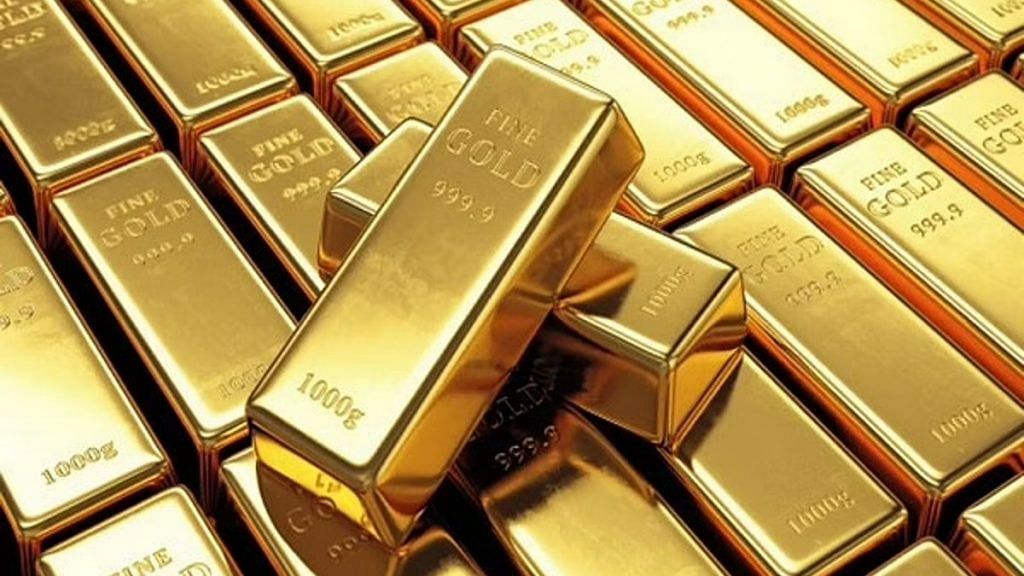New Delhi: The Narendra Modi government is planning changes to its Gold Monetisation Scheme (GMS) to ensure that risk of fluctuating gold prices is shared by the consumer and not only borne by the government, ThePrint has learnt.
In order to incentivise it for consumers to deposit their idle gold in banks, the government will be ready to offer inflation-protected returns, where the deposit’s principal amount will be linked to the inflation rate, a senior government official said.
Launched in 2015, GMS allows people to deposit their idle gold with a Reserve Bank of India (RBI)-designated bank and earn interest on it. This works like a fixed deposit. Depositors may earn up to 2.5 per cent interest, depending on the tenure chosen.
The interest earned on the gold deposits is exempt from capital gains tax, wealth tax and income tax. On maturity, short-term and medium-term gold deposits can be returned in gold, but long-term deposits are returned in the equivalent value of gold in rupees.
The finance ministry, along with the RBI and other stakeholders, is conducting a structural review of the scheme, as the current cost of the scheme in repayments — principal plus interest — is turning out to be more than the cost of borrowing through its treasury bills (T-bills), which the government is using as a benchmark to calculate costs.
T-bills are short-term debt instruments issued by the government in three tenors and carry a yield between 4.5-6.0 per cent.
According to the revised plan, which is still under stakeholder consultations, the price of gold that a depositor gets at the redemption stage will remain the same as it was at the time of the deposit, the official said.
For example, a customer deposits his idle gold in the bank at Rs 25,000 per 10 grams under the GMS. Five years later, which is also the time when the deposit matures, the price of the gold may have shot up to Rs 35,000 per 10 grams. However, the interest paid on the deposit and repayment of the principal amount will continue to be calculated on the price at which it was deposited — Rs 25,000 per 10 grams.
Currently, on maturity, while the interest on gold deposits under GMS is calculated on the initial price, the principal is calculated on the price that exists on the day of redemption of the gold deposit, according to the RBI website. This makes it costlier for the government.
With the revision in the provisions of the scheme, “the price risk would move to the customer from the government”, the official told ThePrint.
On the flip side, the official said, even if the price of gold at the time of redemption of deposit is lower than what it was at the time of deposit, the government would calculate the interest and principal repayment amount based on the price of gold on the day the deposit was made.
Also read: Indian banks ‘unprepared’ for climate-related risks, RBI must take action, new report says
Reducing investment in physical gold
The proposal to revamp the scheme comes on the back of a 33 per cent jump in gold imports in 2021-22 from a year earlier. With high inflation in the current fiscal year, the amount of gold imports in value terms is likely to increase further.
The idea behind introducing the scheme, among other things, was to wean away investors from buying physical gold, and investing in paper gold — a term used for gold-related assets that reflect the price of gold but are not gold — as high gold imports put pressure on the current account deficit (CAD), the gap between export and import of goods and services.
CAD worsened sharply in the third quarter of 2021-22 to $23 billion (2.7 per cent of the GDP) from $9.9 billion (1.3 per cent of GDP) in its second quarter, due to the widening trade deficit, reflecting higher commodity prices and domestic demand recovery.
With the global crude oil prices remaining above $100 per barrel, various analysts expect the CAD to be around three per cent of the GDP in 2022-23.
ThePrint had reported in March that the Modi government was reconsidering the GMS as it believed its costs outweigh benefits, and the scheme could not achieve what it set out to do.
The official said it was observed that the benefits expected from the scheme at the time of formulation — in terms of reduction in gold imports or mobilising idle gold holdings in the country, estimated at about 25,000 tonnes — have not materialised.
Since the inception of the scheme, the government has been able to mobilise only 25 tonnes of gold from the total gold holdings. One tonne equals 1,000 kilograms.
Making GMS affordable for govt
The government had also asked the RBI to conduct a comprehensive and structural review of the scheme to suggest changes to make it more affordable to the government.
The government official quoted above said that the RBI feels it was not feasible for the government to discontinue the scheme, as there are concessions under the scheme that allow gold depositors to claim tax deductions and already around 25,000 kilograms of gold have been mobilised under it since the inception of the scheme.
“The scheme cannot be taken off because of the demand factors involved, mainly related to the tax concessions, but the government can definitely work on reducing the costs associated with it,” the official said.
A consumer may avail of three kinds of gold deposits under the scheme. These are short-term gold deposits with a tenure of one-to-three years, medium-term gold deposits with a tenure of 5-7 years, and long-term gold deposits for a period of 12-15 years.
While short-term deposits are operated by banks, interest on medium- and long-term gold deposits are borne by the government under the gold monetisation scheme.
(Edited by Poulomi Banerjee)
Also read: Why didn’t RBI raise key interest rate much earlier despite rising inflation? Here’s a theory
